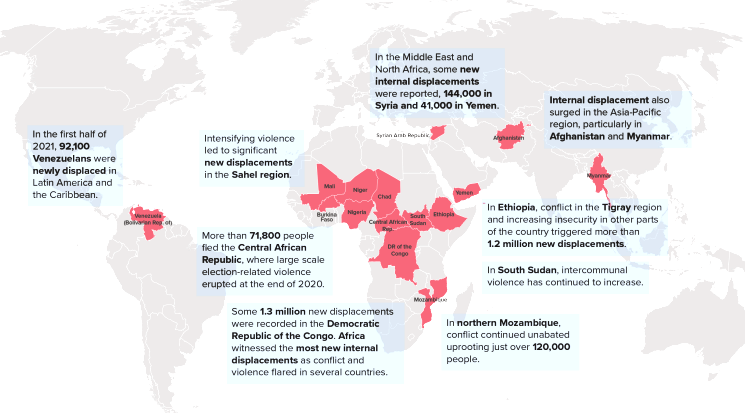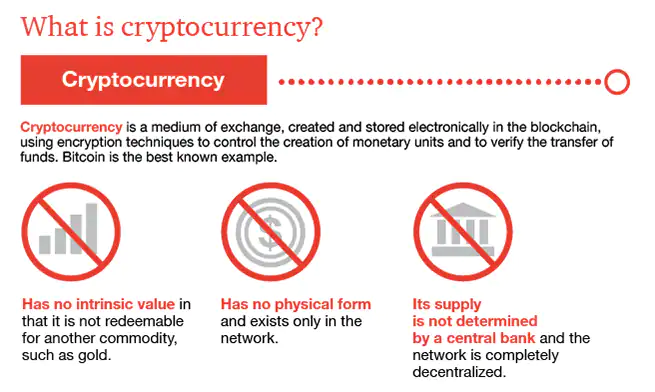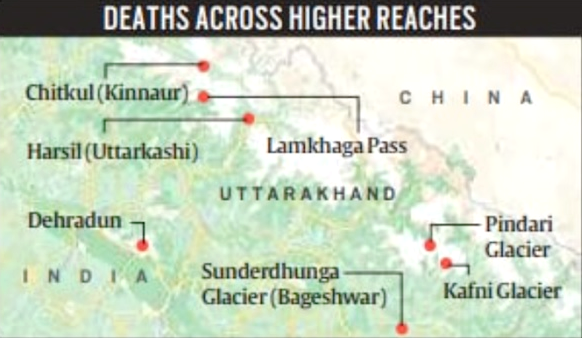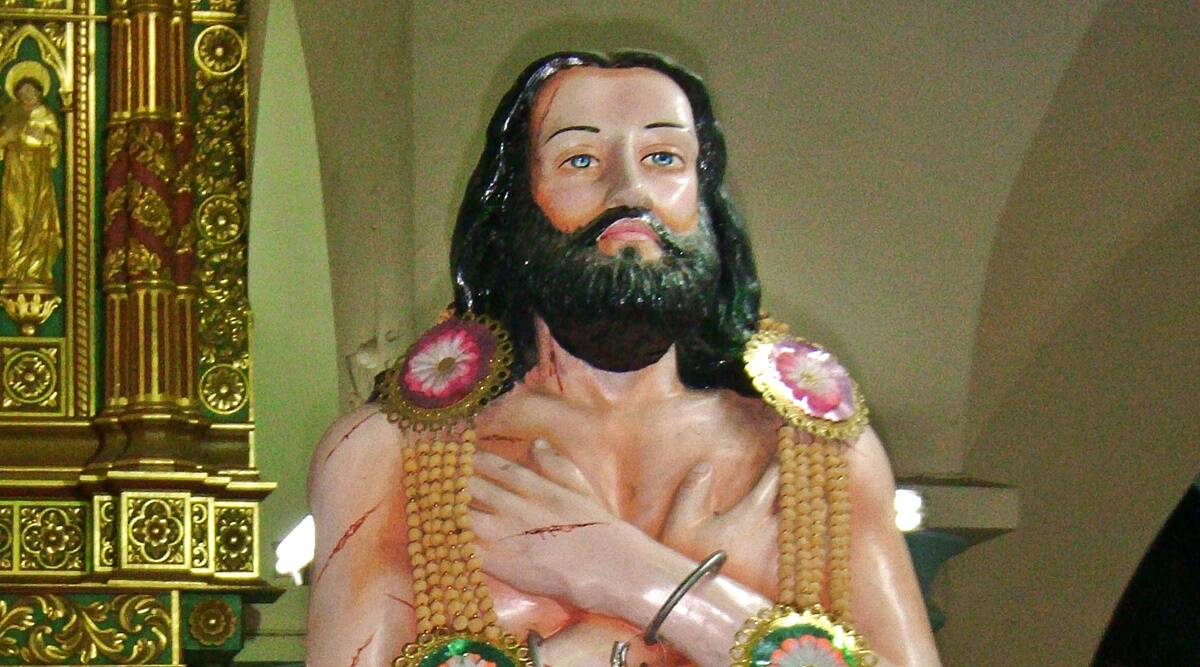Internal Displacement
Why in News
According to a report (Mid-Year Trends 2021 Report) by the United Nations High Commissioner for Refugees (UNHCR), nearly 51 million people were internally displaced across 33 countries due to conflict and violence in the first six months of 2021.
- The combination of conflict, Covid-19, Poverty, Food insecurity and the Climate emergency has compounded the humanitarian plight of the displaced, most of whom are hosted in developing regions.
- Africa is the region that is most vulnerable in terms of the numbers of displaced persons.
Key Points
- Internal Displacement (Meaning):
- Internal displacement describes the situation of people who have been forced to leave their homes but have not left their country.
- Factors of Displacement: Millions of people are uprooted from their homes or places of habitual residence each year in the context of conflict, violence, development projects, disasters and climate change and remain displaced within their countries’ borders.
- Components: Internal displacement is based on two components:
- The person’s movement is coerced or involuntary (to distinguish them from economic and other voluntary migrants);
- The person stays within internationally recognised state borders (to distinguish them from refugees).
- Difference from Refugee: According to the 1951 Refugee Convention, a “refugee” is a person who has been persecuted and forced to leave his native country.
- A precondition of being considered a refugee is that a person crosses an international border.
- Unlike refugees, internally displaced people are not the subject of any international convention.
- At the international level, no single agency or organisation has been designated as the global lead on protection and assistance of internally displaced persons.
- However, there are United Nations Guiding Principles on Internal Displacement.
- Challenges Faced by Internally Displacement Persons (IDPs): IDPs can live under threat of physical attack, sexual- or gender-based violence, and run the risk of being separated from family members.
- They are frequently deprived of adequate shelter, food and health services, and often lose their property, land or their access to livelihoods.
- Internal Displacement in India:
- Extent: Estimating the number of IDPs in India is problematic, as regular monitoring is not possible in such a huge country which lacks a central authority responsible for coordinating data from central and state governments.
- Nearly five million people were displaced in India in 2019 - the highest in the world so far - according to ‘The Global Report on Internal Displacement (GRID 2020)’.
- Policy Framework: India has no national policy and legal institutional framework to deal with either refugees or IDPs.
- India has not ratified the 1951 Convention and 1967 Protocol and does not permit UNHCR access to most refugee groups.
- In the absence of a permanent institutional structure to oversee refugee issues, the granting of refugee status has been at the discretion of the political authorities.
- Factors of Internal Displacement in India:
- Secessionist Movements: Since independence, north-east India has witnessed two major armed conflicts – the Naga movement and Assam movement.
- Jammu & Kashmir’s war between state forces and militants, had led to mass exodus of the Kashmiri Pandits.
- Identity-based Autonomy Movements: Identity-based autonomy movements, such as in Bodoland, Punjab, Gorkhaland and Ladakh, have also led to violence and displacement.
- Localized Violence: Internal displacement has also arisen from caste disputes (as in Bihar and Uttar Pradesh), religious fundamentalism and the ‘son-of-the soil policy (aggressive denial of residency and employment rights to non-indigenous groups).
- Environmental and Development-induced Displacement: In order to achieve rapid economic growth, India has invested in industrial projects, dams, roads, mines, power plants and new cities which have been made possible only through massive acquisition of land and subsequent displacement of people.
- Secessionist Movements: Since independence, north-east India has witnessed two major armed conflicts – the Naga movement and Assam movement.
- Extent: Estimating the number of IDPs in India is problematic, as regular monitoring is not possible in such a huge country which lacks a central authority responsible for coordinating data from central and state governments.
Way Forward
- Need for Policy Framework: India needs to formulate migration centric policies, strategies, and institutional mechanisms in order to ensure inclusive growth and development and reduce distress induced migration.
- Providing Justice: The government at Centre needs to provide amenities and social securities for Internally displaced population, which is riddled with the issues of inadequate housing; low-paid, insecure or hazardous work; extreme vulnerability of women and children to trafficking and sex exploitation etc.
Regulating Cryptocurrency
Why in News
Recently, the Prime Minister of India chaired a meeting regarding the management of the cryptocurrency sector. Citing the unregulated nature of the crypto market, he called for taking progressive and forward-looking steps.
- At the moment, there is no legislature that covers cryptocurrencies in India. In India, owning cryptocurrencies is still not illegal. In 2020, the Supreme Court had struck down a ban on trading of crypto currency in India, which was imposed by the Reserve Bank of India (RBI).
- China has declared all cryptocurrency transactions illegal, effectively imposing a complete ban, whereas El Salvador has permitted Bitcoin as legal tender.
Key Points
- Benefits Associated with Cryptocurrency:
- Fast and Cheap Transactions: Cryptocurrencies are way cheaper to use to execute international transactions because the transactions don't have to be handled by a series of intermediaries before they reach their destinations.
- Investment Destination: There is a limited supply of cryptocurrency – partially like gold. Moreover, the last few years have seen the price of cryptocurrencies rising faster than other financial instruments.
- Due to this, cryptocurrencies can become a preferred investment destination.
- Anti-Inflationary Currency: Due to high demand of cryptocurrency its prices have largely remained on a growing trajectory. In this scenario, people tend to hold more cryptocurrency than spending it.
- This will cause a deflationary effect on currency.
- Associated Concerns with Cryptocurrencies:
- Bombardment of Advertisement: The crypto market is seen as a way to earn quick profits. Due to this, there is bombardment of advertising, both online and offline, to lure people into speculating in this market.
- However, there are concerns that these are attempts to mislead the youth through “over-promising” and “non-transparent advertising”.
- Counterproductive Utility: Unregulated crypto markets can become avenues for money laundering and terror financing.
- Cryptocurrencies are Extremely Volatile: Bitcoin skyrocketed from USD 40,000 to reach an all-time high of USD 65,000 (between January to April 2021).
- Then in May 2021, it plunged and throughout June it remained below USD 30,000.
- Macroeconomic and Financial Stability: According to a Group of Crypto exchanges, crores of Indians have invested over Rs 6,00,000 crore in crypto assets.
- The extent of investment exposure of Indian retail investors in this unregulated asset class, poses a risk to Macroeconomic and Financial Stability.
- Stock Market Issues: Securities and Exchange Board of India (SEBI) has flagged the issue that it has no control over the “clearing and settlement” of crypto currencies, and it cannot offer counterparty guarantee as is being done for stocks.
- Further, whether cryptocurrency is a currency, commodity, or security has not been defined.
- Bombardment of Advertisement: The crypto market is seen as a way to earn quick profits. Due to this, there is bombardment of advertising, both online and offline, to lure people into speculating in this market.
Way Forward
- Legislative Framework: India is yet to table the Cryptocurrency and Regulation of Official Digital Currency Bill, 2021, which will lay down the regulatory framework for the launch of an “official digital currency”.
- Thus, there is a need to expedite passing of the bill and design a regulatory framework to deal with cryptocurrencies.
- Global Cooperation: The framework on cryptocurrencies will require global partnerships and collective strategies.
Unified Payments Interface (UPI)
Why in News
The Unified Payments Interface (UPI) payments system has cut across the Indian socio-economic digital divide amazingly fast.
- Even though UPI is indeed a groundbreaking innovation in the digital payments landscape, reliability and security are still considered to be at stake, keeping many individuals and businesses apprehensive about the payment system.
Key Points
- Unified Payments Interface (UPI):
- It is an advanced version of Immediate Payment Service (IMPS)- round–the-clock funds transfer service to make cashless payments faster, easier and smoother.
- UPI is a system that powers multiple bank accounts into a single mobile application (of any participating bank), merging several banking features, seamless fund routing & merchant payments into one hood.
- UPI is currently the biggest among the National Payments Corporation of India (NPCI) operated systems including National Automated Clearing House (NACH), Immediate Payment Service (IMPS), Aadhaar enabled Payment System (AePS), Bharat Bill Payment System (BBPS), RuPay etc.
- The top UPI apps today include PhonePe, Paytm, Google Pay, Amazon Pay and BHIM, the latter being the Government offering.
- As part of an agreement, India's UPI will be linked to Singapore's PayNow.
- NPCI launched UPI with 21 member banks in 2016.
- Achievements:
- Digital transactions through UPI recorded phenomenal growth during the pandemic year 2020-21 and several countries have evinced interest to learn from Indian experience so that they could replicate the model.
- The value of transactions made using the UPI crossed USD100 billion in a month for the first time in October, 2021 according to data from the NPCI, further cementing its position as India’s most popular digital payments system.
- India’s digital payments industry is likely to grow from Rs. 2,153 trillion at 27% Compounded Annual Growth Rate (CAGR) to Rs. 7,092 trillion by 2025.
- The growth is likely to come on the back of strong use cases of merchant payments, government policies including Jan Dhan Yojana, personal data protection bill along with the growth of MSMEs, growth of millennials and high smartphone penetration.
- Challenges:
- The threat of cybercrime in the global banking and financial services industry has increased amid the coronavirus pandemic.
- E.g. Malicious Software Cerberus
- Fraudulent claims, chargebacks, fake buyer accounts, promotion/coupon abuse, account takeover, identity theft, card detail theft and triangulation frauds are emerging as challenges.
- The threat of cybercrime in the global banking and financial services industry has increased amid the coronavirus pandemic.
National Payments Corporation of India
- NPCI, an umbrella organisation for operating retail payments and settlement systems in India, is an initiative of Reserve Bank of India (RBI) and Indian Banks’ Association (IBA) under the provisions of the Payment and Settlement Systems Act, 2007.
- It is a “Not for Profit” Company under the provisions of Section 25 of Companies Act 1956 (now Section 8 of Companies Act 2013), with an intention to provide infrastructure to the entire Banking system in India for physical as well as electronic payment and settlement systems.
Way Forward
- A properly designed Public-Private Partnership (PPP) policy may provide a 21st century engine to harness the power of market players for greater digital infrastructure, access, and literacy for the Indian population.
- In a vibrant Indian democracy, a public policy-driven digital empowerment of the Indian electorate can help ensure responsible digital conduct in the interest of consumers and the larger public interest.
Weather Forecasting
Why in News
Recently, 21 trekkers died at the Lamkhaga Pass trek in four mountaineering and trekking expeditions which once again puts the spotlight on the importance of right weather forecasting.
- Lamkhaga Pass is a high altitude pass in Garhwal Himalayas (Uttarakhand) which connects with Sangla in Himachal Pradesh. Due to its altitude and remoteness, it is considered one of the toughest treks in the Himalayas (Uttrakhand).
Key Points
- Weather Forecasting:
- It is the prediction of the weather through application of the principles of physics, supplemented by a variety of statistical and empirical techniques.
- In addition to predictions of atmospheric phenomena themselves, weather forecasting includes predictions of changes on Earth’s surface caused by atmospheric conditions - e.g., snow and ice cover, storm tides, and floods.
- Need:
- For Military: During the war the military can plan their battles by featuring in the expected weather condition to maximize the chance of winning the war.
- For Minimizing Losses: It enables people to plan and take precautions against various natural calamities such as floods and typhoons so as to minimize their effects.
- For Farmers: Enables farmers to adjust their farming activities to suit the expected weather condition.
- For Transport: Weather forecasting greatly influences transport, especially in air and water. Aircraft take-off and landing can be affected by weather whereas storms and strong winds greatly affect water travel.
- For Tourists: It can help to guide and encourage tourists to visit certain areas.
- Weather Forecasting Methods:
- Weather forecasters rely on a massive chunk of data to design computer models and simulations that help predict an incoming change in the weather.
- India Meteorological Department (IMD) uses the INSAT series of satellites hovering in the geosynchronous orbit along with the Real-Time Analysis of Products and Information Dissemination (RAPID), a weather data explorer application, that acts as a gateway and provides quick interactive visualisation along with 4-Dimensional analysis capabilities.
- The forecasters use data generated by the satellites around cloud motion, cloud top temperature, water vapour content that help in rainfall estimation, weather forecasting, and provide the genesis of cyclones and their direction.
- Apart from tracking satellite data, IMD collaborates with ISRO for ground-based observations from the Automatic Weather Stations (AWS), the Global Telecommunication System (GTS) that measure temperature, sunshine, wind direction, speed and humidity.
- Meanwhile, the Agro-meteorological Tower (AGROMET) and Doppler Weather Radar (DWR) systems augment the observations.
- In 2021, IMD adopted a new strategy for issuing monthly and seasonal operational forecasts for the southwest monsoon rainfall by modifying the existing two-stage forecasting strategy.
- The new strategy is based on the existing statistical forecasting system and the newly developed Multi-Model Ensemble (MME)-based forecasting system.
- The MME approach uses the coupled global climate models (CGCMs) from different global climate prediction and research centres, including IMD’s Monsoon Mission Climate Forecasting System (MMCFS) model.
- All these technological strides have been possible since the National Monsoon Mission (NMM) was initiated in 2012 with a budgetary allocation of Rs 551 crore and the broad objective to set up a dynamical prediction system for seasonal forecast and to improve the monsoon forecasting skills in the country.
- Issues Related to Weather Forecasting:
- The weather forecasts at times go wrong due to the unpredictability of changes in ocean currents that are responsible for affecting global weather systems.
- For India, the Bay of Bengal acts as the buffer that affects the weather across the country.
- The dynamic models of weather forecasting are based on certain assumptions and it is not possible to incorporate all components of nature accurately in the dynamical models and that is the first reason why sometimes forecasts can go wrong.
- A dynamic weather prediction model involves 3D mathematical simulation of the atmosphere on a computer.
- The errors in forecasts can also crop up due to errors in the initial input given to the models.
- The weather forecasts at times go wrong due to the unpredictability of changes in ocean currents that are responsible for affecting global weather systems.
Way Forward
While India depends on satellite data and computer models, the UK has moved ahead with integrating supercomputers into the forecasting that collect and visualise data from satellites. These supercomputers can process petaflops of data in seconds, effectively speeding up the process and enhancing accuracy. In time, the system is headed towards further enhancement and experts are hopeful that predictions will consistently improve.
Covid-19 Blow to Diabetes Care
Why in News
Recently, the World Health Organization (WHO) warned that the number of diabetes cases in Africa is predicted to rise to 55 million by 2045, an increase of 134% from 2021.
- The rate of deaths due to the novel coronavirus disease (Covid-19) in the continent is significantly higher in patients with diabetes.
- World Diabetes Day is celebrated every year on 14th November.
Key Points
- Diabetes:
- Diabetes is a Non-Communicable Disease (NCD) that occurs either when the pancreas does not produce enough insulin or when the body cannot effectively use the insulin it produces.
- Insulin is a peptide hormone secreted by Pancreas which helps in maintaining normal blood glucose levels by facilitating cellular glucose uptake, regulating carbohydrate, lipid and protein metabolism and promoting cell division and growth.
- Diabetes is a Non-Communicable Disease (NCD) that occurs either when the pancreas does not produce enough insulin or when the body cannot effectively use the insulin it produces.
- It is classified into two types:
- Type 1 Diabetes: It occurs when the pancreas fails to produce sufficient insulin.
- Type 2 Diabetes: Type 2 diabetes is the most common type of diabetes. In this condition the body does not use insulin properly. This is called insulin resistance. The main reason for the occurrence of type 2 diabetes is due to obesity and lack of exercise.
- Diabetes Burden:
- In India:
- Diabetes is a growing challenge in India with an estimated 8.7% diabetic population in the age group of 20 and 70 years.
- The International Diabetes Federation Diabetes Atlas, in 2019, placed India among the top 10 countries for people with diabetes.
- The rising prevalence of diabetes and other noncommunicable diseases is driven by a combination of factors - rapid urbanization, sedentary lifestyles, unhealthy diets, tobacco use, and increasing life expectancy.
- Around the World:
- Today, approximately 6% of the world’s population – more than 420 million people – live with either type 1 or type 2 diabetes.
- It is the only major non-communicable disease for which the risk of dying early is going up, rather than down.
- It has emerged as one of the major comorbid conditions linked to severe Covid-19 infections.
- An estimated 24 million people are living with diabetes in Africa in 2021.
- In India:
- Related Initiatives:
- The World Health Organization (WHO) launched the Global Diabetes Compact, which has the vision of reducing the risk of diabetes, and ensuring that all people who are diagnosed with diabetes have access to equitable, comprehensive, affordable and quality treatment and care.
- India’s National Non-Communicable Disease (NCD) Target is to prevent the rise in obesity and diabetes prevalence.
- Launched in 2010, National Programme for Prevention and Control of Cancers, Diabetes, Cardiovascular Diseases and Stroke (NPCDCS) aims to provide support for diagnosis and cost-effective treatment at various levels of health care.
Reopening Kartarpur Corridor
Why in News
The government is considering reopening the Kartarpur Sahib Gurudwara corridor to Pakistan to allow Sikh pilgrims to cross over, more than 20 months after it was shut down due to the Covid-19 pandemic.
- Government is considering opening the route by 19th November (2021), the birth anniversary of the Sikh founder Guru Nanak, known as Gurpurab or “Prakash Parv”.
Key Points
- About:
- The corridor is one of the rare new initiatives between India and Pakistan amidst ties that have been in a downward spiral in 2019 after the Pulwama attack, Balakot strikes and the decision to amend Article 370 on Jammu and Kashmir, which led to the recall of diplomats on both sides and cancellation of all trade relations.
- The project is also unique as visa-free “Human corridors” of this sort are normally used for emergency situations: refugees fleeing violence or humanitarian disasters, not for pilgrimages.
- Kartarpur Corridor:
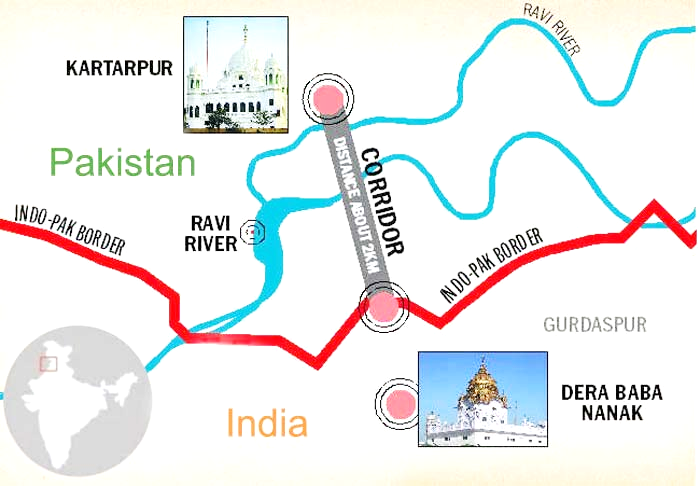
- The Kartarpur corridor connects the Darbar Sahib Gurdwara in Narowal district of Pakistan with the Dera Baba Nanak shrine in Gurdaspur district in India’s Punjab province.
- The corridor was built to commemorate 550th birth anniversary celebrations of Guru Nanak Dev, founder of Sikhism on 12th November 2019.
Guru Nanak
- Guru Nanak Dev Jayanti is observed on the full-moon day in the month of Katak to celebrate the birth of Guru Nanak Dev (1469-1539).
- He advocated the 'Nirguna' form of bhakti. He rejected sacrifices, ritual baths, image worship, austerities and the scriptures of both Hindus and Muslims.
- He set up rules for congregational worship (sangat) involving collective recitation.
- He appointed one of his disciples, Angad, to succeed him as the preceptor (guru), and this practice was followed for nearly 200 years.
- The fifth preceptor, Guru Arjan, compiled Baba Guru Nanak’s hymns along with those of his four successors and also other religious poets, like Baba Farid, Ravidas (also known as Raidas) and Kabir, in the Adi Granth Sahib.
- These hymns, called 'Gurbani', are composed in many languages.
- Kartarpur gurudwara is the revered shrine about 4km across the border where Guru Nanak Dev spent the last 18 years of his life.
Devasahayam Pillai
Why in News
Devasahayam Pillai, an 18th-century Hindu convert to Christianity, would be the first Indian layman (a non-ordained member of the Church) to be made a saint.
- Pope Francis will canonize Blessed Devasahayam Pillai, together with six other Blesseds, during a Canonization Mass in St Peter's Basilica in Vatican on 15th May, 2022.
- Vatican City is the seat of the Roman Catholic Church.
Key Points
- He was born on 23rd April 1712 in the village of Nattalam in Tamil Nadu’s Kanyakumari District.
- Known as Nilakanda Pillai before embracing Christianity, he grew up in an upper caste family of temple priests.
- He went on to serve in the court of Travancore’s Maharaja Marthanda Varma. It was here that he met a Dutch naval commander, who taught him about the Catholic faith.
- He became a Catholic in 1745. Pillai took the Christian name Lazarus, but later came to be known as Devasahayam (God’s help).
- He then faced the wrath of the Travancore state, which was against his conversion.
- On 14th January, 1752, just seven years after he became a Catholic, Devasahayam was shot dead in the Aralvaimozhy forest.
- Since then, he has widely been considered a martyr by the Catholic community in South India.
- His body is at Saint Francis Xavier Cathedral in the Diocese of Kottar (Tamil Nadu).
- The Church is of the view that his preaching of equality of all people despite caste differences eventually led to his martyrdom.
- He was first approved for sainthood in February 2020 for “enduring increasing hardships” after he decided to embrace Christianity.
Categorisation of Religion
- About:
- The world’s primary religions fall into two categories:
- Abrahamic religions: Christianity, Judaism, and Islam
- Indian religions: Hinduism, Buddhism, Sikhism, and others.
- The world’s primary religions fall into two categories:
- Christianity:
- Christianity is the largest, with more than two billion followers.
- Christianity is based on the life and teachings of Jesus Christ and is approximately 2,000 years old.
- Its largest groups are the Roman Catholic Church, the Eastern Orthodox churches, and the Protestant churches, and its sacred text is the Bible.
- Over the centuries, Christianity grew in numbers as it spread around the world, often through missionaries and colonizers.
SITMEX-2021
Why in News
Recently, the third edition of the trilateral naval exercise Singapore-India-Thailand Maritime Exercise (SITMEX) has been conducted in the Andaman Sea of the Indian Ocean.
Key Points
- About:
- It is conducted annually, and was announced by India at Shangri-La Dialogue in June 2018.
- The International Institute for Strategic Studies (IISS) Shangri-La Dialogue is Asia’s premier defence summit. It was launched in 2002.
- The first edition of SITMEX was hosted by the Indian Navy, and was conducted off Port Blair in September 2019.
- Singapore hosted the second edition of the exercise in November 2020. The 2021 edition of the exercise is being hosted byThailand.
- It includes a number of tactical training drills such as naval manoeuvres and surface warfare exercises.
- It aims to strengthen mutual confidence and develop common understanding and procedures towards enhancing the overall maritime security in the Indo-Pacific region.
- The exercise is in line with India’s SAGAR (Security and Growth for All in the Region) vision.
- It is conducted annually, and was announced by India at Shangri-La Dialogue in June 2018.
- Other Military Exercises between India and Thailand:
- MAITREE (Army)
- SIAM BHARAT (Air Force)
- Indo-Thai CORPAT (Navy), which was conducted recently.
- Other Military Exercises between India and Singapore:
- Bold Kurukshetra (Army)
- Joint Military Training (Air Force)
- SIMBEX (Navy)

